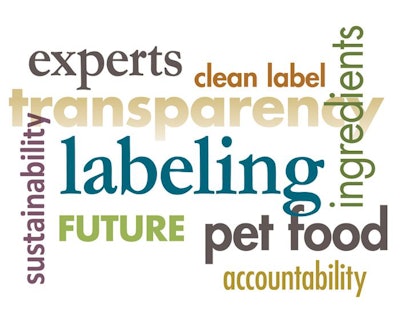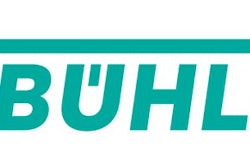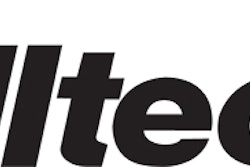
Every year finds the pet food industry grappling with more complexity, more nuance and greater responsibility to its consumers, and 2017 was no different. With a significant focus on ingredients, e-commerce and what customers want for their pets, the year found companies scrutinizing their packaging, labeling, ingredient composition and even their place in the industry relative to consumer perception. As it turns out, the new year is likely to bring more of the same, with an even stronger focus on pet nutrition, as well as company accountability and responsibility. Let’s take a look at what industry experts say is coming in 2018.
The 'clean' movement: pet food labeling and ingredients
“Clean label” is a trend in both the human food and pet food segments, though what exactly the trend implies continues to change as it brings more attention to itself.
“‘Clean label’ has no singular definition,” said Patrick Luchsinger, marketing manager, nutrition and pet food for Ingredion Incorporated. “It can mean different things to different consumers — overall it can mean ‘pure’, ‘simple’, ‘non-GMO’ and ‘unadulterated’ as consumers want to know exactly what is in their food. They want the same for their four-pawed companions, and I expect the pet food segment to be influenced by the ‘clean label’ trend in the human food segment.”
Packaged Facts trends analysis bears this idea out. “The consumer demand for ‘clean label’ that’s storming the food industry will continue to cross over into pet food and treats, as consumers increasingly see pet food as food that’s for pets, rather than as a taken-on-faith packaged product,” said David Sprinkle, research director for Packaged Facts.
And while ingredients are the most straightforward way to present a “clean label” to customers, the desires behind the trend are more complex than a simple need for simplicity (and its links, however philosophical, to the idea of “clean”). According to the Kerry Health and Nutrition Institute, “clean” not only implies an easy-to-understand ingredient label in consumer minds, but also embodies the ideas of transparency, accountability and sustainability. So, it’s no surprise that these ideas come up as other trends the pet food industry expects to see in 2018.
Transparent and accountable: Customers keeping an eagle eye on pet food practices
“Ingredient sourcing, transparent labeling and most importantly ingredient quality are primary consumer concerns necessary for pet food,” said Juan Gomez, global director with Alltech. And as if that all wasn’t enough to focus on, customers are also paying attention to pet food manufacturers themselves. “Social, environmental and ethical responsibility: These are key aspects that consumers expect from businesses and brands,” said Gomez. “It is a message to corporations that consumers not only want safe and nutritious foods, they also want environmentally friendly and sustainable products.”
The transparency trend isn’t new, but it is getting more complicated to navigate, and presents real challenges to the pet food industry. “Although not a new trend but certainly more visible now, I see that an increasing number of companies in our industry struggle with transparency,” said Marcel Blok, owner of Change Stranamics BV. “On the one hand, they know and understand that consumers want and expect more openness. On the other hand, this openness is not seen by manufacturers to be in their interest. All in all, it’s a tough balancing act that does not necessarily enhance credibility.”
To customers, transparent also means approachable, according to Mitin Rathod, global segment strategy and marketing lead for Sensient Technologies Corporation, adding yet another layer to the trend. “Fueled by aging pet parents and health-conscious millennials, who both now form a significant growth pool in the pet industry globally, ‘approachable’ health claims and ‘transparent’ brand positioning are the two important trends that are here to stay,” he said.
The Pet Food Institute (PFI) has seen the transparency trend grow, and believes the pet food industry Should focus on opportunities as well as challenges. “While trends in specific diet types, ingredients or nutritional philosophy will continue to emerge, PFI sees an overarching and perennial expectation for transparency that will continue to play a significant role in how the industry communicates,” said Mary Emma Young, director of communications for PFI. “We are in an era in which information is immediately accessible at our fingertips, contributing to increasingly vocal desire among shoppers to learn more about how pet food is made or why certain ingredients may be used. This has created an opportunity for pet food makers to join the conversation. We are witness to a similar dialogue in human food production with efforts to help inform and provide facts when opinion can be viewed as more credible than evidence. While the specific trends may vary from year-to-year, the demand for transparency is here to stay. PFI’s goal is to help meet that broader and growing expectation.”
Sustainability: Looking ahead to future pet food practices
Linked with both “clean” and “transparent” is “sustainable,” the third buzzword pet food industry experts expect to hear in 2018.
“’Sustainably produced’ will recognize environmentally friendly practices,” said Nick Manley, communications manager for Bühler Aeroglide. "And sustainability in terms of processing and how pet food manufacturers can increase output and decrease energy use will be increasingly recognized.”
One of the most prominent pet food industry segments where sustainability has been discussed is packaging, where innovators are coming up with technologies to ensure pet food manufacturers have something to promote to their environment-conscious pet owners. “With the number of millennial pet parents continuing to rise, sustainability will continue to be a huge focus when they are out shopping for themselves or their pets,” said Blaine Johnson, business development director, North America, for Tetra Pak. “To meet this growing demand, brands will continue to shift to more environmentally friendly options.”
All in all, pet food industry experts expect the industry to carry on as it always has: walking the line between what customers want and what pets need, speaking to pet owners on their level while educating them on pet nutrition, and innovating to stay on top of the shifting trends that are so wrapped up in pet owners’ humanization of their furry friends. It looks to be another busy year on the horizon for the industry, but everyone thinks pet food is up to the challenge.
What will the pet food industry look like in 20 years?


















